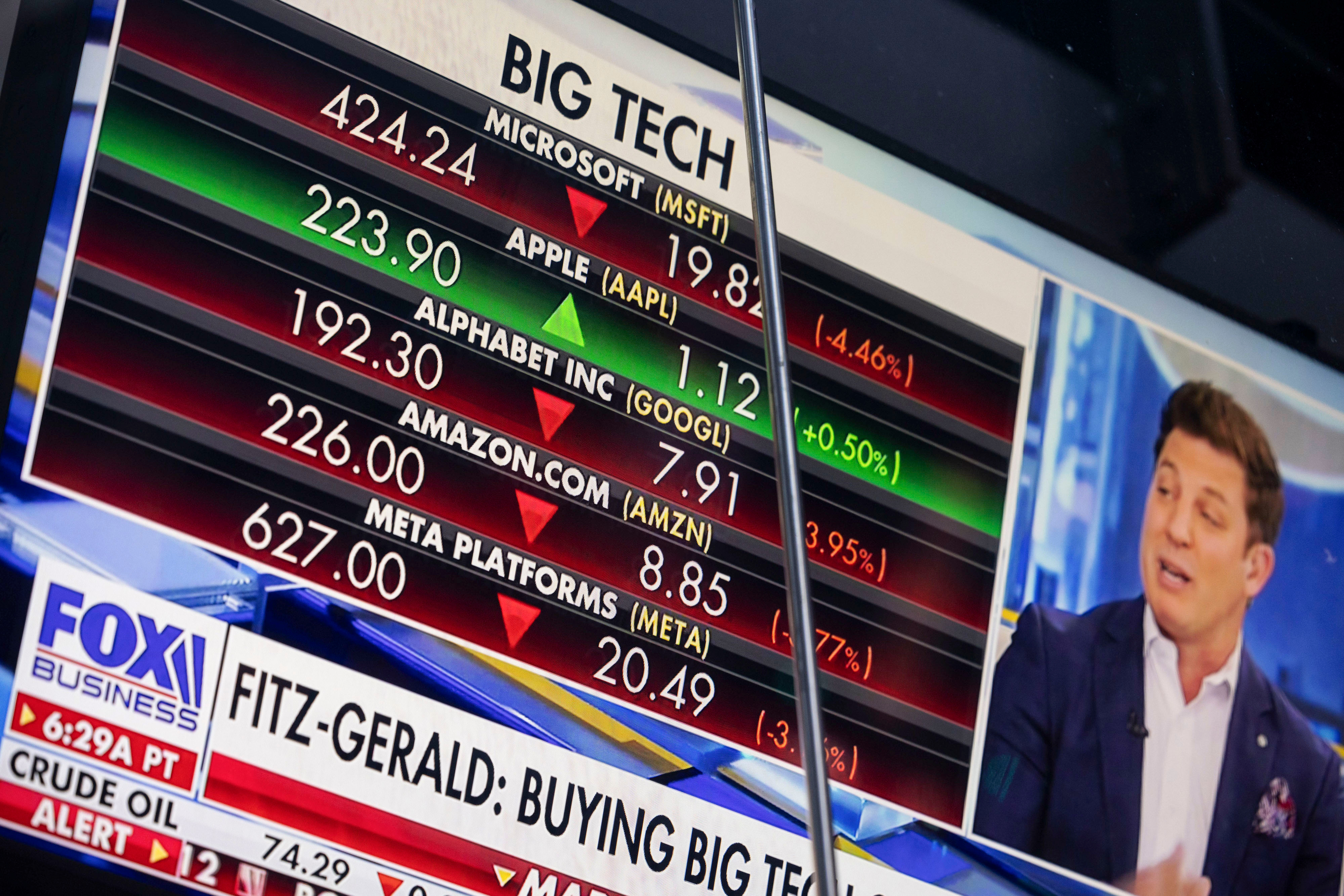Impact of Trump Tariffs on Investment Strategies
Market fluctuations caused by the recent trade tariffs imposed by the United States have led investors to capitalize on price dips. In March, 60 percent of trades executed through Interactive Investor, one of the prominent investment platforms in the UK, were purchases, with the remaining 40 percent being sales. When focusing specifically on US stocks, the buying rate increased to 61 percent, while selling fell to 39 percent. Typically, purchase trades constitute about 55 percent, while sales account for 45 percent.
The S&P 500 index has experienced a decrease of approximately 5 percent this year, and the tech-centric Nasdaq index has seen a drop of 10 percent as the market braces for new US tariffs set to take effect on Wednesday, a day Donald Trump has termed “Liberation Day.”
Myron Jobson from Interactive Investor commented, “Market declines driven by geopolitical factors, like Trump’s tariff policies, can prompt quick sell-offs. However, these occasions may also provide excellent opportunities to acquire quality investments at lower prices. Market timing can be challenging, yet those willing to endure the turbulence might find that buying undervalued assets during uncertain times can yield significant returns over the long term.”
Financial advisors caution against making impulsive decisions based on temporary market shifts. Jason Hollands from Bestinvest advised, “While the instinctive response may be to drastically alter your portfolio by liquidating assets and moving into cash or bonds, I would advise proceeding with caution amid volatile markets that fluctuate significantly on a daily basis.”
Nevertheless, there are strategies to safeguard your investments while still aiming for profit without assuming excessive risks. Below are some recommendations.
Consider Reducing US Tech Stock Holdings
Although many investors are acquiring US stocks during this price decline, those who have seen substantial gains might consider selling some of their larger stakes. If you have been invested in American equities since early 2020, you may have more than doubled your investments, largely due to the stellar performance of seven major US tech firms—Apple, Microsoft, Amazon, Alphabet, Meta, Nvidia, and Tesla—often referred to as the Magnificent Seven.

Despite recent price declines, these companies continue to dominate the US market, and their significant presence might have led your portfolio to become overly concentrated in US equities. Therefore, it may be prudent to secure some profits through sales and maintain portfolio diversification.
Hollands remarked, “Many investors have heavily invested in US funds or global equity funds heavily weighted towards the US, pursuing the strong performance of the Magnificent Seven. This segment of the market has become increasingly vulnerable due to inflated valuations. Additionally, concerns have arisen about excessive investment in US big tech following the revelation by Chinese AI start-up DeepSeek about its cost-effective generative AI model.”
One effective strategy to reduce dependency on US tech is to reallocate some of your US investments into an equal-weighted index fund, such as the Xtrackers S&P 500 Equal Weight ETF. Exchange-traded funds (ETFs) are a type of index fund that holds all the companies in an index, but equal-weighted funds hold shares in all firms equally, regardless of market capitalization.
This fund incurs a management fee of 0.2 percent per annum, which is in addition to any platform or advisory fees applicable to your investments.
Explore Investment Opportunities in China and Europe
As the market landscape shifts, investors are increasingly looking towards regions where US trade obstacles may enhance local sales. Europe is emerging as a promising area that had previously been overlooked, particularly before Trump’s second term. Additionally, there has been significant interest in Chinese equities.
While the US market has faced declines this year, markets in China, Europe, and other regions have shown growth. The MSCI China index is up 16 percent, while the MSCI Europe index has risen by 11 percent. The FTSE 100 index of UK shares has also appreciated approximately 4.7 percent.
According to Andy Miller, investment director at Quilter Wealth Management, “This period has highlighted the importance of diversification in investment portfolios. For those with ISAs, it’s crucial to assess how and where your investments are allocated, ensuring they have adequate global exposure that extends beyond the US.”
Bestinvest suggests European funds such as the Liontrust European Dynamic fund with an annual fee of 0.85 percent, and the Fidelity European Trust PLC investment trust, which has a fee of 0.77 percent.
Don’t Overlook UK Investments
Although the UK is also affected by US tariffs, some analysts believe that the UK may be poised to benefit due to its import-export balance with the US. Jobson explained, “Trump’s targeting of nations with which the US has a trade deficit means that countries like the UK, with a weakened industrial base, primarily trade with the US in services like finance and consulting rather than sectors targeted by Trump’s tariffs, such as manufacturing and energy.”
To leverage this situation, Bestinvest recommends the Temple Bar investment trust, which predominantly invests in UK companies. One-third of its portfolio is allocated to financial firms, with its largest holdings being Barclays, NatWest, and Shell. This investment trust carries an ongoing charge of 0.62 percent annual fee.
Prioritize Defensive Investments
In uncertain times, gold often becomes a favored asset for investors, which explains its robust performance this year. Gold prices have surged about 16 percent when measured in sterling. Hollands believes that maintaining a modest exposure to gold in a portfolio, typically around 5 percent, is a sound strategy. This can easily be achieved by investing in a gold exchange-traded commodity (ETC), which tracks the price of physical gold without the need for physical possession. One viable option is the Invesco Physical Gold ETC, which has a management charge of 0.12 percent annually.
Alternatively, you might consider a fund designed to reduce volatility through a diversified asset mix. An example is the Troy Trojan fund, which includes various assets such as large, well-established companies like Unilever and Visa, alongside bonds and gold. This fund has higher fees, with a 0.88 percent annual charge.




Post Comment